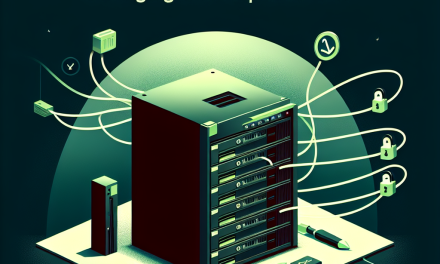Ensuring data security is paramount for any organization, and one of the best ways to secure critical data is through offsite backups. Implementing encrypted offsite backups on Linux servers not only protects your data against catastrophic hardware failures but also safeguards it from unauthorized access. In this article, we’ll explore best practices for creating and managing encrypted offsite backups on Linux servers.
Understanding the Importance of Encrypted Offsite Backups
Offsite backups keep your data safe from local disasters such as fires, floods, or theft. Encryption adds a crucial layer of security, ensuring that even if the backup is compromised, the data remains unreadable without the appropriate decryption keys. These practices help align with regulatory compliance and business continuity strategies.
1. Choose the Right Backup Solution
Selecting a robust backup solution is the first step in creating effective offsite backups. Here are some popular tools and methods:
- rsync: A powerful command-line tool that can synchronize files and directories between local and remote systems.
- Duplicity: Provides encrypted, bandwidth-efficient backups using the rsync algorithm.
- BorgBackup: A deduplicating backup program that also supports encryption and is well-suited for offsite backups.
- Restic: A modern backup solution that is easy to use and supports encryption.
Evaluate these tools based on your specific needs, including file size, frequency of backups, and the ease of recovery.
2. Configure Encryption Properly
When encrypting backups, it’s essential to use strong encryption methods. Here are some tips for implementation:
- AES Encryption: Use AES-256 for strong encryption. Most modern encryption tools support this algorithm.
- Key Management: Manage your encryption keys separately from your backups. Use a secure key-management solution to protect your keys.
- Passphrase Strength: Choose a complex passphrase for encrypting backups to thwart brute force attacks.
3. Automate Backup Processes
Automating backup processes can reduce the risk of human error and ensure consistency. Consider:
- Cron Jobs: Use cron jobs to schedule automated backups. Create a cron job to perform backups during off-peak hours to minimize business disruption.
- Testing: Regularly test automated backup scripts to ensure they run correctly and efficiently.
Example Cron Job Entry
To schedule daily backups at 2 AM, add an entry to your crontab:
bash
0 2 * /path/to/backup_script.sh
4. Use Version Control for Backups
Maintaining multiple versions of backups can be a lifesaver when data corruption goes unnoticed for an extended period. Solutions like BorgBackup and Duplicity support versioning, allowing you to restore data from previous states.
5. Network Security Considerations
Securing the transfer of backups to an offsite location is crucial. Implement the following practices:
- SSH Tunneling: Use SSH to securely transfer backups. Tools like
rsyncprovide SSH options natively. - VPN: Consider using a Virtual Private Network (VPN) for additional security when transferring sensitive data.
- Firewalls: Use firewalls to restrict access to backup servers and ensure only authorized personnel can access them.
6. Regularly Test Backup Integrity and Restoration
Backup integrity is just as important as the backup itself. Regularly verify backups using the following methods:
- Checksum Verification: Many tools offer ways to verify backups using checksums to ensure data integrity.
- Restoration Drills: Periodically perform restoration drills to ensure that your backups can be restored successfully and in a timely manner.
7. Maintain Backup Documentation
Documentation is crucial for understanding your backup strategies. Maintain comprehensive documentation that includes:
- Backup policies and schedules
- Encryption methods used
- Details of the backup location and recovery procedures
- Contact information for personnel responsible for backups
8. Stay Informed About Security Updates
The security landscape is constantly changing. Stay informed about the latest security updates for your backup software, encryption methodologies, and Linux distributions. Regularly updating software can mitigate vulnerabilities that could compromise your backups.
Conclusion
Implementing encrypted offsite backups on Linux servers is a vital step in safeguarding your data. By following these best practices, you can ensure that your backups are secure, reliable, and easy to restore when necessary. Investing time in backup strategies today will protect your organization from potential data loss and security breaches in the future.
By leveraging robust tools, automating processes, and ensuring rigorous security measures, you can create a resilient backup system that contributes to the integrity and longevity of your data management practices.





